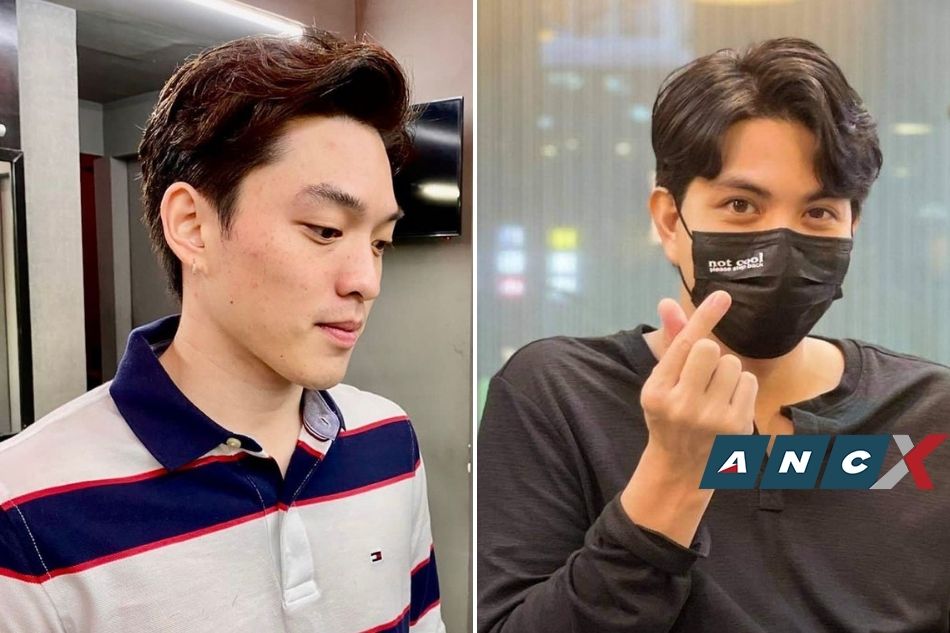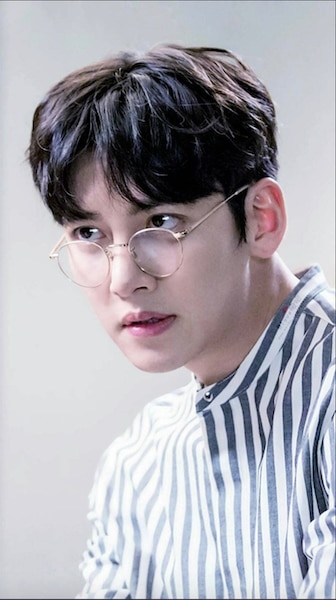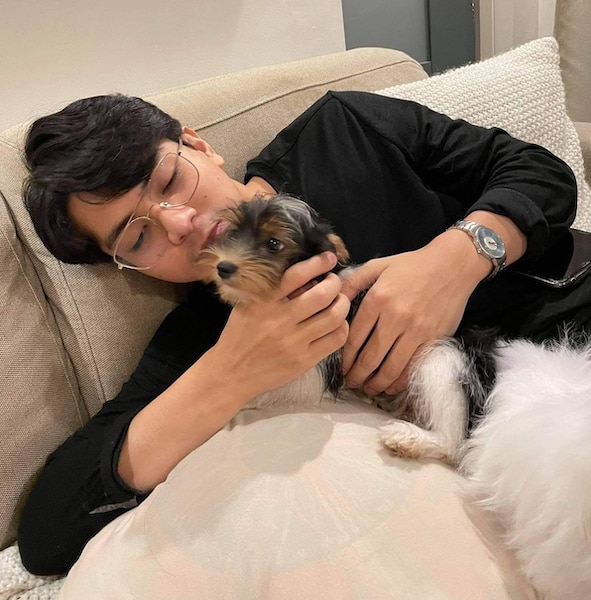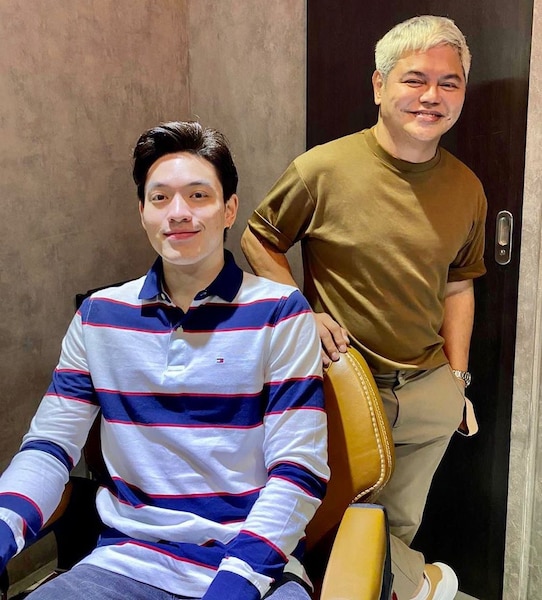If you’re spending quite a number of hours on TikTok, you may have chanced upon videos of men—Filipinos mostly—getting a Korean perm.
The popularity of K-dramas and K-Pop has put the spotlight on how dashing K-gents like Lee Jong-Seok, Ji Chang-Wook, Lee Min-Ho, Lee Dong-Wook, as well as the heartthrobs of BTS, NCT or EXO achieve their seemingly effortless and natural-looking wavy coif.
For many Pinoy men whose hair grows super flat, straight or fine, there is a need for heaps of styling aid and long hours at the salon to achieve, say Lee Jong-Suk’s hair in “While You Were Sleeping.” You can probably do it at home, sure, but “super effort ang pag-style,” says celebrity hairstylist Jing Monis. But with a good salon perm—emphasize on “good”—it would be much easier to style your hair and ooze the appeal of a Korean matinee idol.
Perming has been around for over a century. It’s basically a chemical treatment that adds a curl or a wave to an otherwise straight hair. Perm is actually short for “permanent hairstyle”—which only means the curls could last for months if maintained properly.
Monis, owner of The Jing Monis Salon, says even before the Korean perm trend became The Big Thing, Korean men have already been known for perming their hair. “Normal na yung nagpapa-perm sila ng hair because they want hair that’s easy to style,” he says. “But it’s only in recent years that the younger generation turned it into more distinct and iconic looks.”
But Pinoy men, for their part, had been getting perms since the time of their lolos, too. There was a time they rocked the slick hairstyle using pomada. “Pag wala silang kulot masyadong flat ang hair nila, so nagpapa-perm sila,” Jing tells ANCX. “But because Filipino men are conscious of their masculinity, they don’t really flaunt their perms.”
Korean perm vs others
There are three most common types of perms done in local salons, says international hairstylist Louis Philip Kee—traditional, digital, and setting perm.
With the traditional type, hair is sectioned and curled around plastic rods. Perming lotion is applied onto the hair and left to set. Then once processing time is complete, neutralizer is applied.
With digital perming (also known as a digi-perm or a hot perm) curling hair is done using a combination of chemicals and heat treatment, followed by neutralizers.
There’s also what is called the setting perm, which also uses a perming solution and heat. The difference, he says, is that it comes with an intensive damage control treatment to ensure the hair is easy to manage and the waves and curls will be soft and shiny.
Unless you’re intentionally going for Jon Snow’s (Kit Harington) jet-black spirals on “Game of Thrones,” you should specifically tell your hairstylist you’d like to get a Korean perm. By that, you mean hair with gentler waves—not ringlets.
Louis observes that Korean men usually get the usual graduated, bob, pixie and rice bowl haircuts. But to add style, movement, volume and balance to hair that’s fine, soft and straight, they get a perm.
The kind of perming treatment that will work best for you depends on the type of hair you have. “Traditional perming is usually done if you have very fine hair,” says Jing. “Mahirap ito sa mga stubborn hair or treated hair. Pag stubborn ang hair, I recommend a digital perm. But if hair is normal, you can use the traditional.”
At Jing’s salon, he and his staff make sure to analyze first the condition of the client’s hair before perming it. If hair is healthy enough, they proceed. But if it’s damaged, he recommends prepping the hair first or applying treatments for about a month. “When we see na the texture of the hair is okay already, that’s the only time we perm the hair. Kasi ayokong ma-damage ang buhok,” he says.
Maintenance
Most perms last anywhere from three to eight months, depending on how the person treats his hair. In order for the perm to last, Jing says it is important not to wash the hair for 48 hours after getting a perm. “You need the perm to lock into your hair. Kasi pag winash mo yan, you’re also washing out the solution, so hindi tumatagal ang perm,” he reasons.
If hair is dry, the veteran stylist recommends getting a treatment after a couple of weeks to bring back lost moisture. “This brings back the natural oil and moisture of the hair lost during the perming,” says Jing.
He says it’s also important to use the right tools. A hairbrush will ruin the curls, so it’s best to use a wide-tooth comb. “If you want to style it differently to how your perm was made, use a roll brush to loosen out your curls, and a hairdryer,” he says.
Louis recommends using a sulfate-free shampoo and a good conditioning mask.
Jing highly recommends using a heat protector when blow-drying or styling. “Pag permed ang hair, I don’t usually use a lot of products, probably a very light mousse or water-based product, then styling wax just to give the form. If you have a busy day and you want to maintain a certain look, you could use a heavier styling product and lock it with spray, so it doesn’t move,” he says.
Good perm, bad perm
A Korean perm costs anywhere between P3,000 to P8,000, depending on the length and condition of hair. A perm treatment takes about two to four hours depending on the technique as well as the texture and condition of the hair. Louis doesn’t recommend perming for bleached or sensitized colored hair.
Both Louis and Jing advise that Filipino men who intend to get a perm go to their trusted stylist rather than getting a perm from a salon they’re trying out only for the first time. “Men don’t usually pay attention to the condition of their hair. Minsan, naa-abuse kasi ang buhok nila,” he observes, adding he has repaired and treated so many damaged hair in the past.
For the owner of Lifestyle Salon by Louis Phillip Kee what’s important is they choose a hairdresser who really knows about perming. “It’s not exactly tedious, but it’s a process that requires perfection,” he says, “to achieve the right curls and the right waves. The size of the rods matter, the timing as well.”






